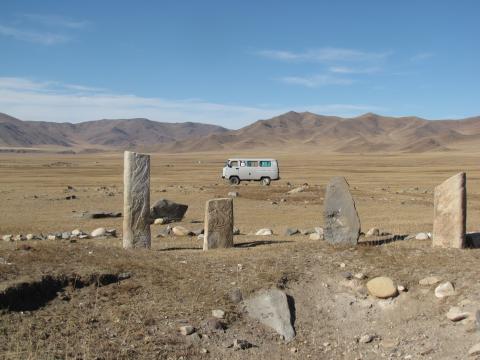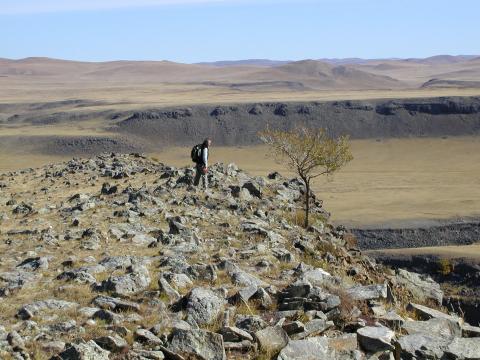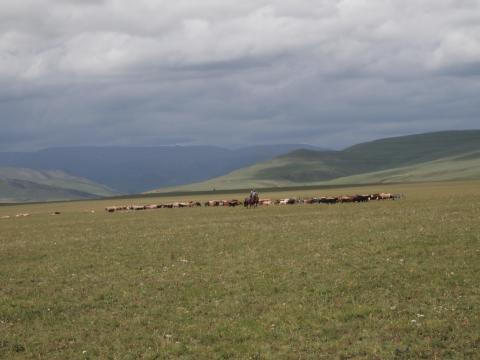
High-elevation, low relief surfaces are common on continents. These intercontinental plateaus influence river networks, climate, and the migration of plants and animals. How these plateaus form is not clear. We are studying the geodynamic processes responsible for surface uplift in the Hangay in central Mongolia to better understand the origin of high topography in continental interiors.
Our Work
Our work focuses on characterizing the physical properties and structure of the lithosphere and sublithospheric mantle, and the timing, rate, and pattern of surface uplift in the Hangay. We are carrying out studies in geomorphology, geochronology, thermochronology, paleoaltimetry, biogeography, petrology, geochemistry, and seismology.
- Significance and Background
- High Topography in Continental Interiors
- Geodynamic Setting of Central Mongolia and The Hangay
- Geology of The Hangay and Adjacent Regions
- Disciplinary Studies
- Lithosphere and Sublithospheric Mantle Properties And Structure: Seismology, Basalt Petrology and Geochemistry, Mantle and Crustal Xenoliths
- Timing Of Processes: Geochronology and Thermochronology
- Landscape Evolution And Surface Uplift: Geomorphology, Cosmogenic Nuclides, Vesicular Basalt and Stable-Isotope Paleoaltimetry, Biogeography
Research Area:
- Geochronology
- Seismology
- Petrology
- Stable-isotope Geochemistry






